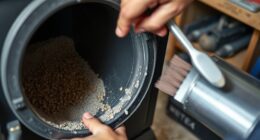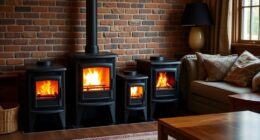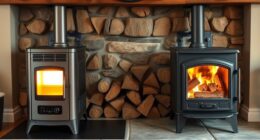As a seasoned stove enthusiast, I understand the annoyance of dealing with a wood stove that emits smoke. However, I have some expert advice to help you overcome this common problem in this article.
By understanding the causes of smoky stoves, improving chimney ventilation, adjusting airflow, and choosing the right wood, you’ll be on your way to a cleaner burn in no time.
Stick around for additional tips and tricks to eliminate that pesky smoke once and for all.
Key Takeaways
- Wet wood and unseasoned wood contribute to excessive smoke emission.
- Checking and improving chimney ventilation is important to ensure proper airflow.
- Assessing air supply and providing sufficient air intake to the wood stove is crucial for efficient combustion.
- Adjusting the damper and choosing the right wood, such as hardwoods or properly seasoned softwoods, can help reduce smoke.
Understanding the Causes of a Smoky Wood Stove
I’ve been researching the causes of a smoky wood stove and found that using wet wood can greatly contribute to the issue. When wet wood is burned, it doesn’t produce enough heat to fully combust, leading to excessive smoke emission. The moisture content in the wood should ideally be below 20% for efficient burning.
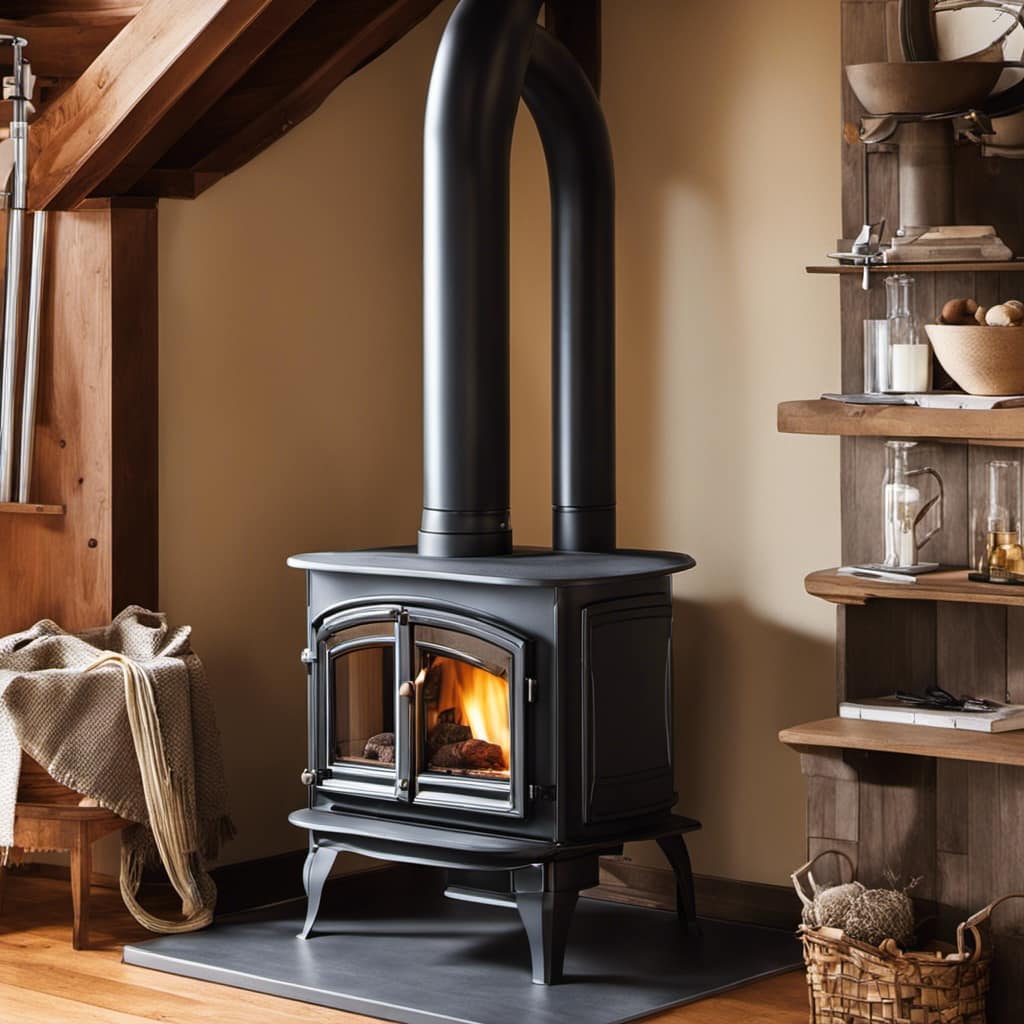
Another common mistake is using unseasoned wood, which hasn’t been properly dried. This can also result in a smoky wood stove. To fix these issues, it’s important to ensure that the wood is properly seasoned and has a low moisture content. This can be achieved by storing the wood in a dry, well-ventilated area for at least six months.
Additionally, using smaller pieces of wood and ensuring proper airflow in the stove can help improve combustion and reduce smoke emission.
Checking and Improving Chimney Ventilation
There might be a problem with the chimney ventilation if there’s excessive smoke coming out of the wood stove. To troubleshoot ventilation issues, follow these steps:
Check for blockages:
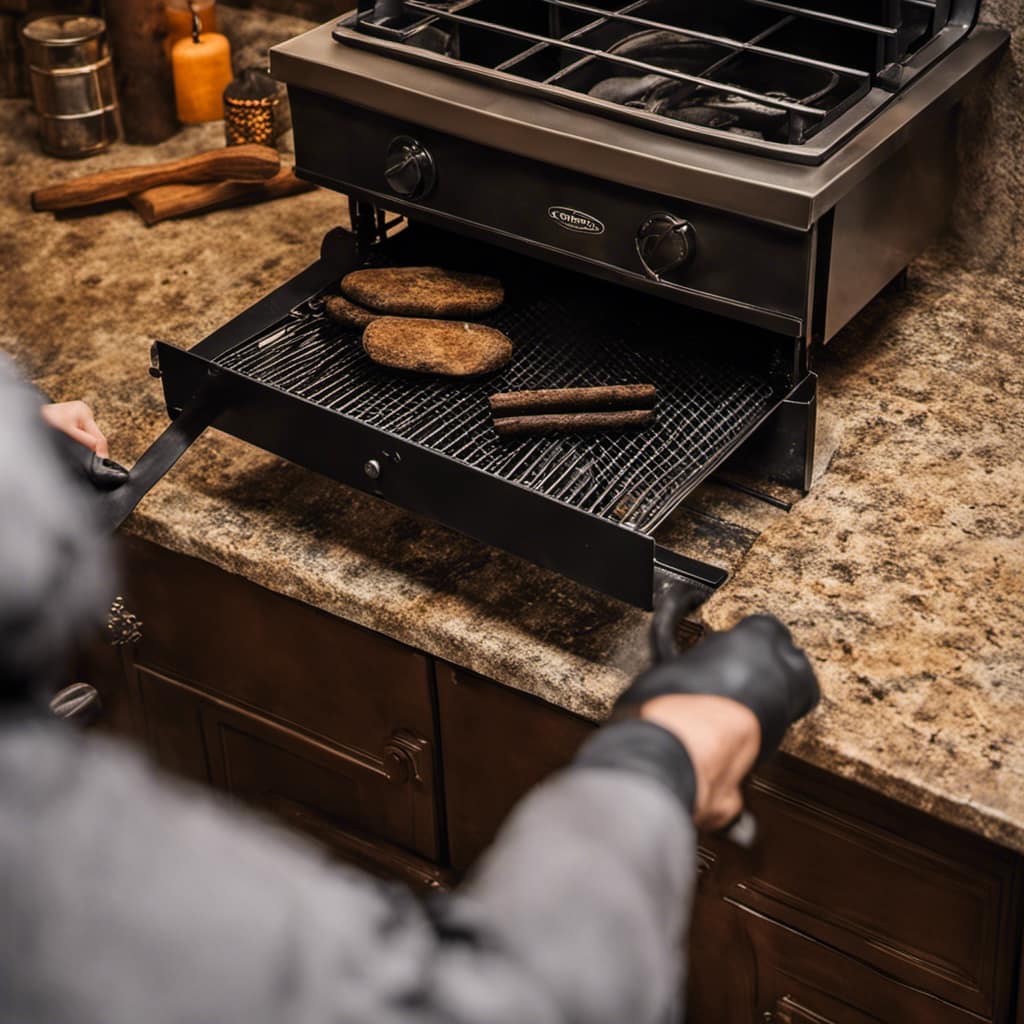
Inspect the chimney for debris or animals’ nests.
Clear any obstructions that might be blocking the flue.
Evaluate the chimney height:
Ensure the chimney extends at least 2 feet above the highest point of the roof.
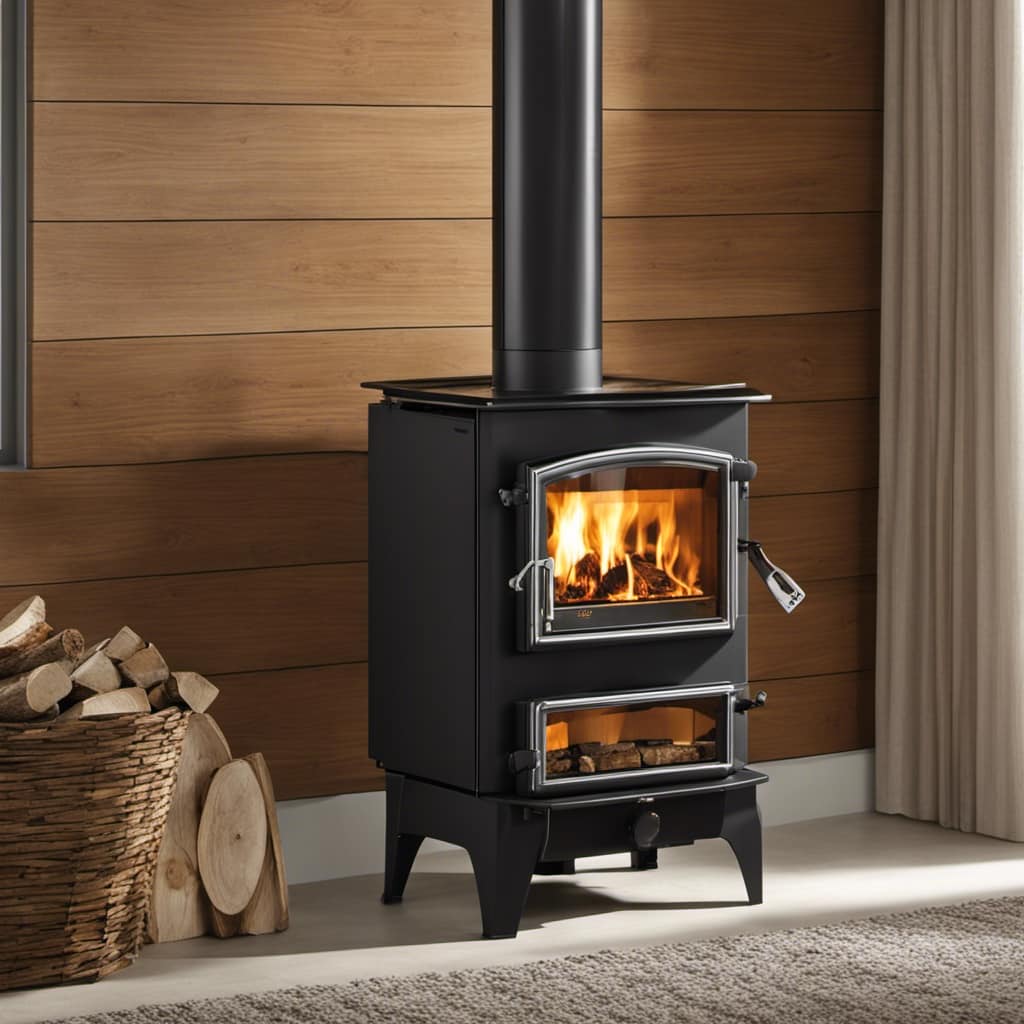
If it doesn’t, consider installing an extension to improve draft.
Assess air supply:
Ensure that the wood stove has enough air supply from outside the house.
Provide a dedicated air intake to ensure proper combustion.
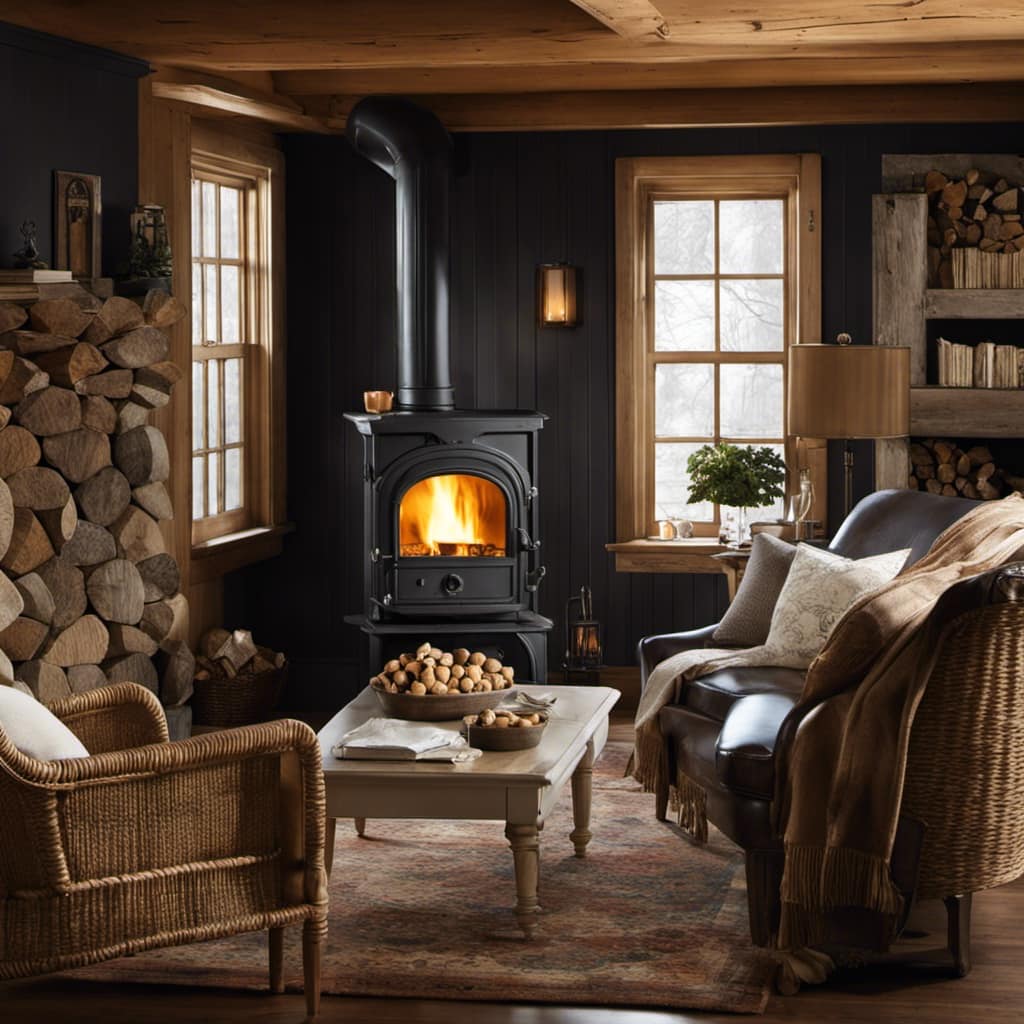
Improving chimney draft involves addressing blockages, optimizing chimney height, and ensuring sufficient air supply to the wood stove. By following these troubleshooting steps, you can enhance the chimney’s ventilation and reduce excessive smoke emissions.
Adjusting Airflow to Reduce Smoke
I can adjust the airflow to reduce smoke emissions from the wood stove.
One of the main ways to control the airflow is by adjusting the damper. The damper is a mechanism that regulates the amount of air that enters the stove.
By opening the damper, more air is allowed in, which can help improve the combustion process and reduce smoke production. On the other hand, closing the damper restricts the airflow, which can lead to poor combustion and increased smoke.
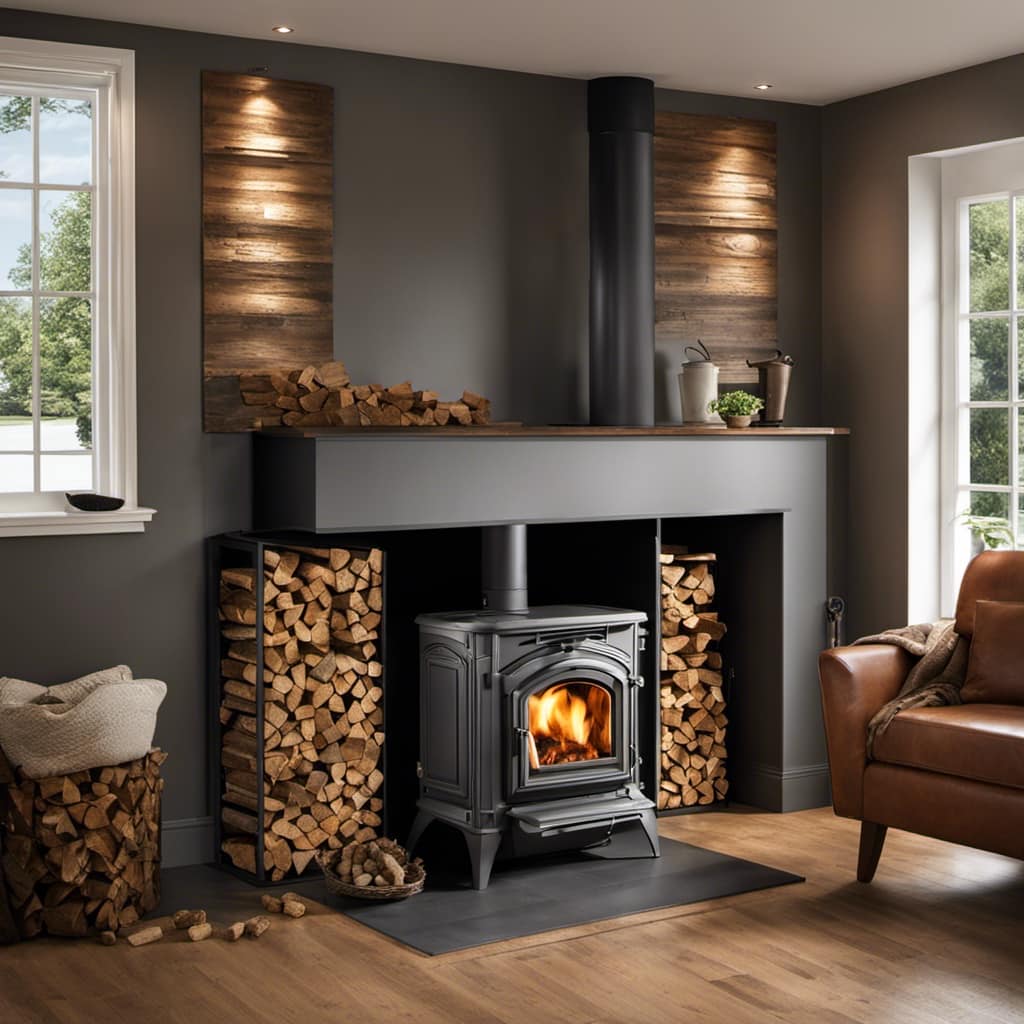
If adjusting the damper doesn’t solve the issue, it may be necessary to troubleshoot the draft. Draft problems can occur due to various factors such as chimney blockages or improper stove installation.
Identifying and addressing these issues can help improve the overall performance of the wood stove and minimize smoke emissions.
Choosing the Right Wood for a Cleaner Burn
To achieve a cleaner burn, selecting hardwoods or seasoned softwoods is essential. When it comes to proper seasoning, ensuring dry wood is crucial for efficient burning. Here are some types of hardwood that you should consider, as they produce minimal smoke:
- Oak: Known for its high heat output and slow burn rate, oak is a popular choice among wood stove users.
- Maple: With its low moisture content, maple burns cleanly and provides a steady source of heat.
- Birch: This hardwood is known for its quick ignition and low smoke production, making it a great option for a cleaner burn.
By using these hardwoods, you can significantly reduce smoke emissions and improve the overall performance of your wood stove.
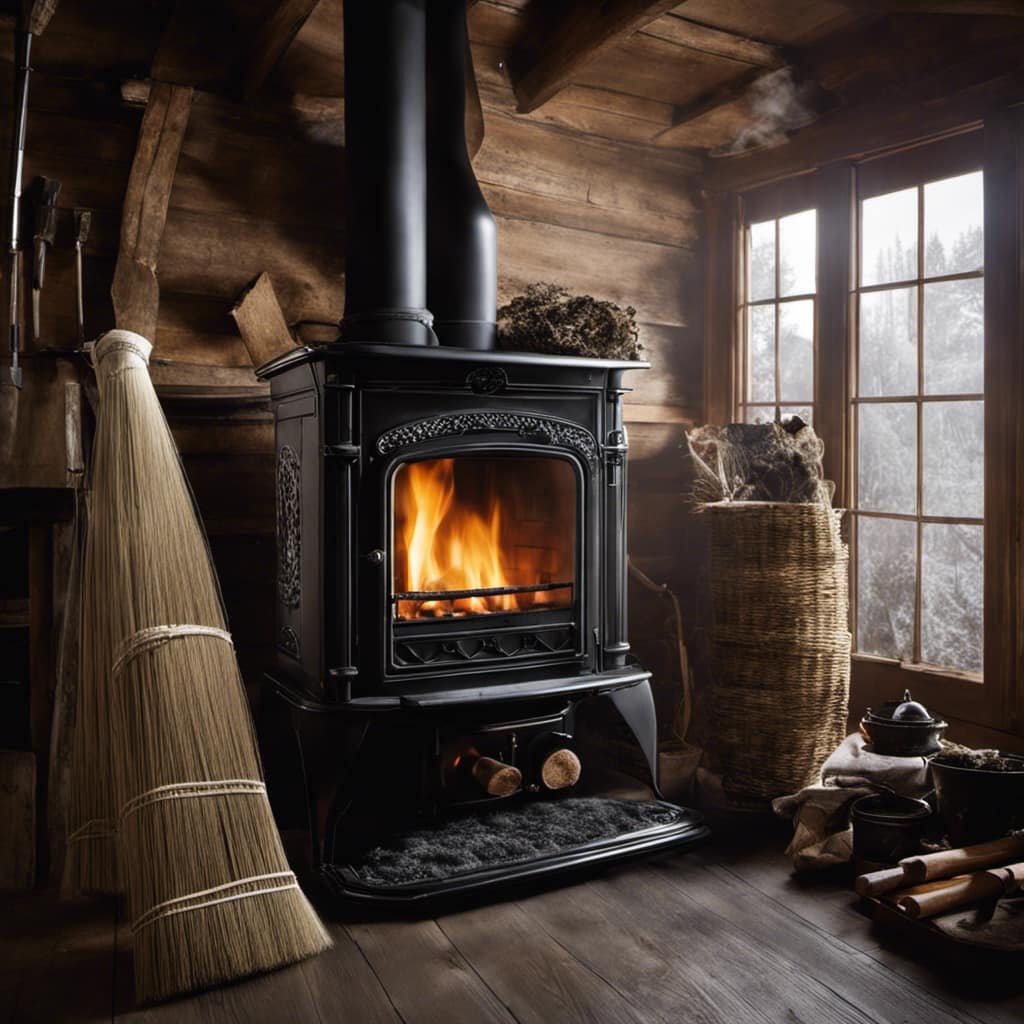
Now, let’s explore some additional tips and tricks to eliminate smoke even further.
Additional Tips and Tricks to Eliminate Smoke
I’ve found that regularly cleaning the chimney and using airtight seals can significantly reduce smoke when using a wood stove. Cleaning techniques are essential to maintain the efficiency and safety of your wood stove.
Firstly, ensure that the chimney is cleaned at least once a year to prevent the buildup of creosote, a highly flammable substance. Additionally, clean the stovepipe and flue to remove any obstructions that may hinder proper airflow.
Secondly, inspect and replace any worn-out gaskets or seals around the stove’s doors and windows. These airtight seals help to prevent air leakage, which can lead to smoke entering your living space.
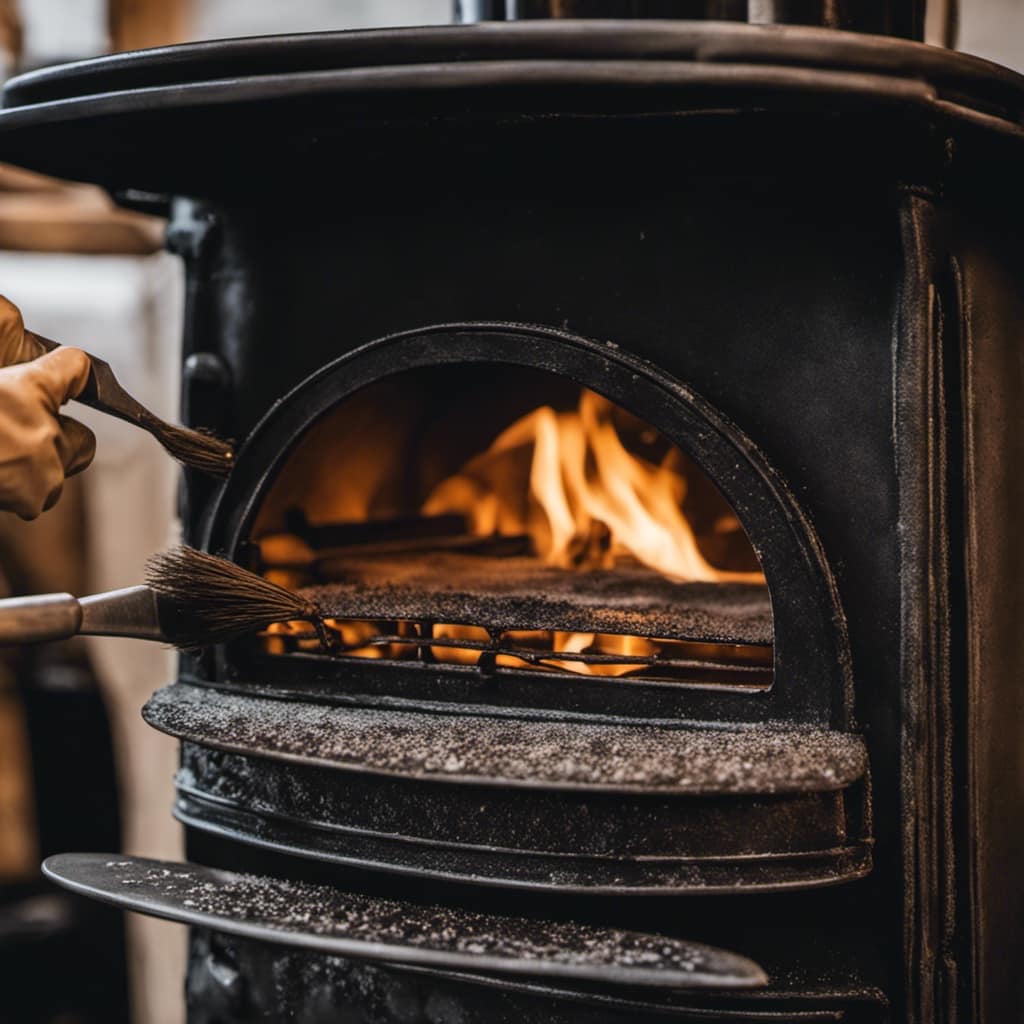
Lastly, troubleshoot common issues such as improper air supply or incorrect wood loading techniques. By following these cleaning techniques and troubleshooting common issues, you can enjoy a smoke-free wood stove experience.
How Can I Prevent a Small Explosion in My Wood Stove?
To prevent wood stove explosion causes, ensure proper ventilation and use only dry, seasoned wood. Regularly inspect the stove for damage, and never overload it with excessive fuel. Keep flammable materials at a safe distance, and schedule annual inspections by a professional to maintain safe operation.
Frequently Asked Questions
Can I Use Any Type of Wood in My Wood Stove?
Yes, you can use different types of wood in a wood stove. However, it is important to use seasoned wood as it burns more efficiently, produces less smoke, and reduces the risk of creosote buildup.
How Frequently Should I Clean My Chimney to Ensure Proper Ventilation?
Chimney maintenance is crucial for proper ventilation. To ensure safety and efficiency, I clean my chimney at least once a year. Regular inspections and removal of creosote buildup prevent smoky issues and maintain optimal airflow.
Are There Any Specific Tools or Equipment I Need to Fix a Smoky Wood Stove?
To fix a smoky wood stove, specific tools and necessary equipment are required. These tools and equipment help in diagnosing and resolving issues such as improper air flow, clogged pipes, or faulty dampers.
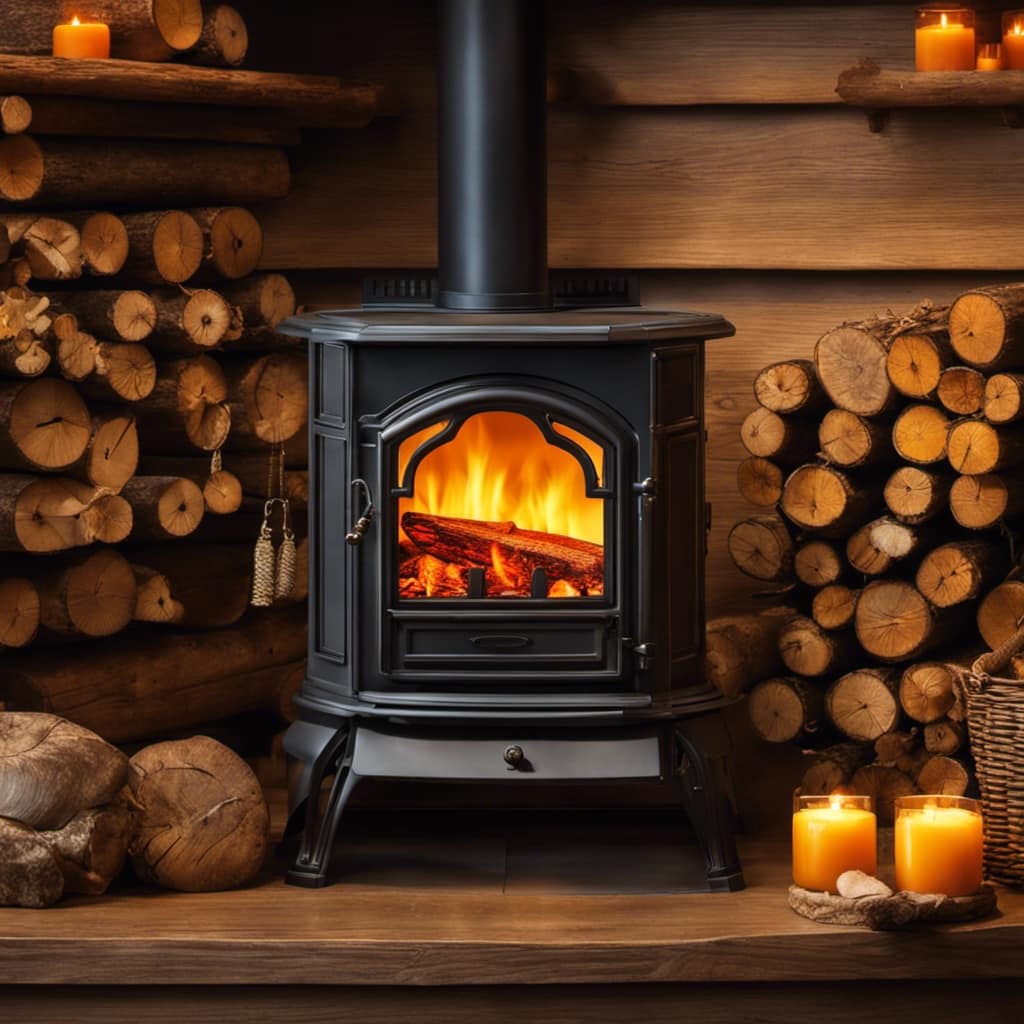
Can I Use a Wood Stove in a Mobile Home or Rv?
I’m not sure about using a wood stove in a mobile home or RV. It’s important to consider the safety regulations and ventilation requirements for these specific environments.
What Are the Potential Health Risks of a Smoky Wood Stove?
The potential health risks of a smoky wood stove include respiratory issues, such as coughing and wheezing, as well as increased risk of lung infections. It is important to address these concerns for a safe and healthy environment.
Conclusion
In conclusion, by understanding the causes of a smoky wood stove and taking necessary steps, such as checking and improving chimney ventilation, adjusting airflow, and choosing the right wood, you can effectively reduce smoke.
Additional tips and tricks can also be implemented for a cleaner burn.
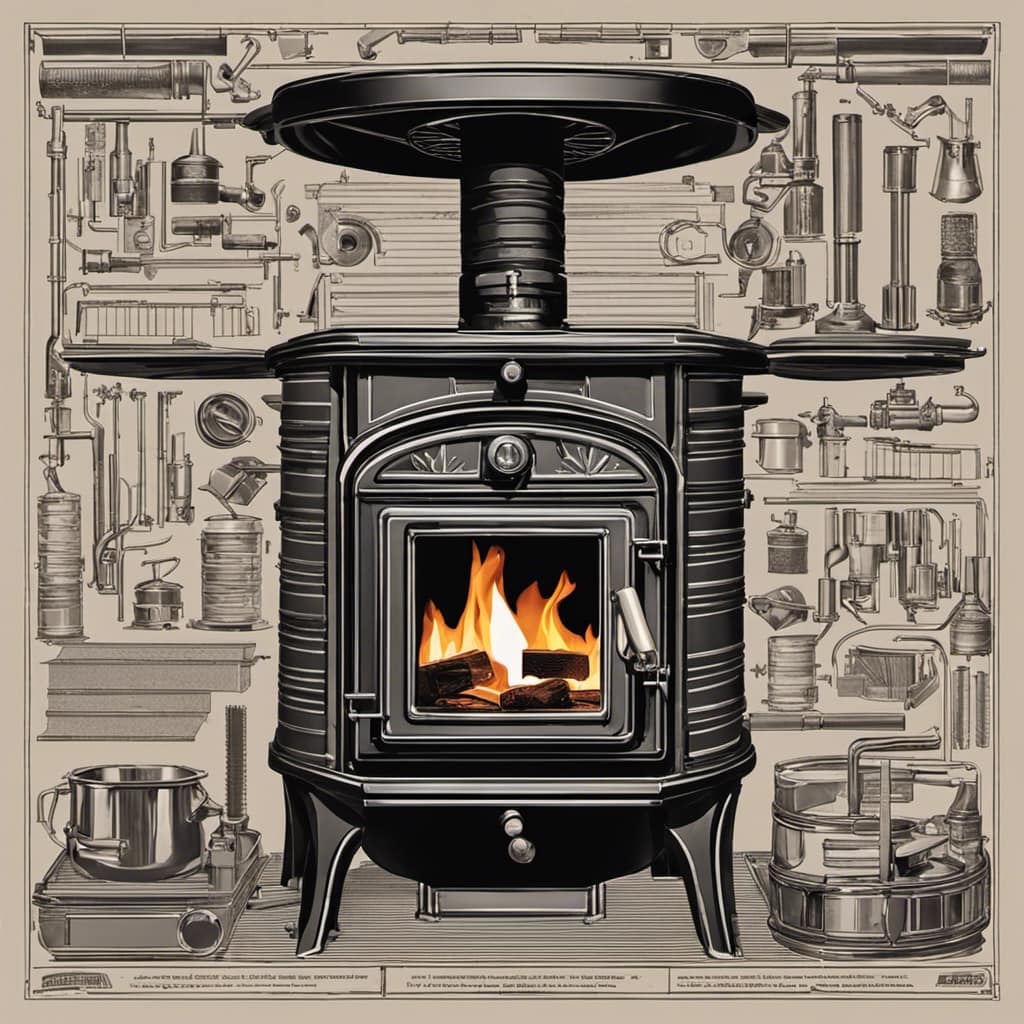
By following these techniques, you can enjoy a more efficient and enjoyable wood stove experience.
So, say goodbye to smoky fires and embrace the warmth and comfort of a well-functioning wood stove.
Growing up surrounded by the vast beauty of nature, Sierra was always drawn to the call of the wild. While others sought the comfort of the familiar, she ventured out, embracing the unpredictable and finding stories in the heartbeat of nature.
At the epicenter of every remarkable venture lies a dynamic team—a fusion of diverse talents, visions, and passions. The essence of Best Small Wood Stoves is crafted and refined by such a trio: Sierra, Logan, and Terra. Their collective expertise has transformed the platform into a leading authority on small wood stoves, radiating warmth and knowledge in equal measure.








